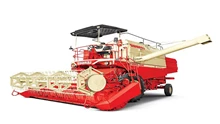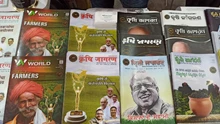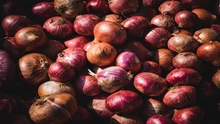
Assam is a paradise for many forms of agriculture, producing a wide range of crops, and then manufacturing things from them. You will be pleased to learn that, unlike other agricultural hubs like Karnataka, West Bengal, Madhya Pradesh, Bihar, Maharashtra, Haryana, Punjab etc. this region is a haven of farming naturally rather than artificially.
To increase productivity, cultivators in these areas employ more artificial machinery and chemical fertilizers; yet, Assam is a natural center. Assam does not require these items in the same way that these states do.
Main Crops of Assam Agriculture
Important crops grown in Assam are;
Rice
Rice is grown in Assam as a seasonal crop. Farmers in this area do not grow rice paddies all year. They could, however, do so using various artificial procedures, as other agricultural hubs in the country do, but they do not.
Probably, Assam has never had such an agricultural environment constructed before. People view it as a part of their culture rather than a business. As a result, they concentrate on rice paddies for only six months of the year, leaving the rest of the year unproductive.
Government, on the other hand, must take additional steps to encourage people to pursue careers in this profession. The reduced cost of paddies, on the other hand, is a major factor in this discouragement.
Also Read - Rice Cultivation in Assam - A Complete Guide
But, whatever the case, the produce from this farming is significantly greater than their year-round needs, even after six months of seasonal farming. Currently, output is so much higher that, even after being consumed as food, tons of crops remain in most people's paddy houses.
It is a source of great satisfaction that paddy cultivation is largely influenced by the weather in this state. The terrain in Assam is exceptionally rich and ideal for rice farming.
That is why, instead of six months, consider how much production could be achieved if paddy cultivation were done utilising a few artificial ways throughout the year. It has a better chance of generating more crops than other agricultural hubs in India, such as Maharashtra, Haryana, and Punjab.
Tea
For everyone, Assam tea is the first choice. The main reason for being famous not only in India, but also throughout the world is due to the existence of several highly unique qualities.
Assam tea is in high demand in some of the world's most important markets, including Russia, Kazakhstan, Azerbaijan, Ukraine, and a slew of other eastern and western European and Asian nations.
This north-eastern state alone produces more than 57 percent of India's tea. With each day, this percentage is rapidly increasing. Because of its unique weather and the lack of chemical fertilisers, Assam tea is of exceptional quality.
You may not believe it, but there are over 900 major tea plantations and over 1,00,000 tiny tea gardens in this small region. Every year, close to 600 million tons of tea are produced from these small and huge gardens.
The crucial point is that India is currently ranked second in the world for growing this green crop, after China, which has held the top spot for decades. With the rise of tea culture in Assam, it is hoped that India would be able to defeat China in this green competition within a few years.
You can picture how fruitful a country could be if it were to beat another superpower in a certain field by relying on a small territory.
Also Read - Weed Management strategies for Sustainable Rice Cultivation under dry seeding environment
Vegetables
The second half of Assam agriculture is entrenched above vegetables. Despite the fact that they never or seldom utilize artificial techniques in producing various crops, the production is so great here that it enhances their potential to export it to other Indian states.
Apart from importing a few vegetables such as onion and potato, Assam grows all of its own crops. Here are some examples of high-yielding summer and winter vegetables:
Summer Seasonal Veggies: Lady Finger, Cucumber, Snake Gourd, Chayot or Squash, Long Beans etc.
Winter Seasonal Veggies: Indian Mustard, Spinach, Coriander, Cabbage, Cauliflower, Onion, Capsicum, Mushroom, Cherry Tomato, Carrot etc.
Also Read - Guide for RICE-cum-FISH FARMING
Jute
Jute, also known as Morapat, is one of Assam's most important agricultural crops. Lower Assam locations like Nalbari, Nagaon, Goalpara, Barpeta, and Darang produce a lot of this.
It's used to manufacture a variety of clothing and ropes. Jute farming is equally important in Assam as tea and rice farming. As a result, establishing a jute-based industry is not impossible.
Carpet cloths, sacking, fabrics, bags, wrappers, doormats, and other essential things created from jute are only a few examples. There is already a sizable industry around these products. Nevertheless, there are many successful entrepreneurs.
Sugarcane
Sugarcane is another important crop grown in Assam. It also has a lot of potential for the future, thanks to the tremendous rise of industry over the last decade. This crop is particularly popular in Karbi Anglong, Nagaon, and Dima Hasao areas.
Sugarcane is, of course, the primary crop used to manufacture sugar and jaggery. The climate in this part of the country is ideal for growing this luscious crop.
Bottom Line:
Besides these five crops, there are many other crops that are grown in Assam. However, these are the most common, and they are the ones that are usually manufactured here.









